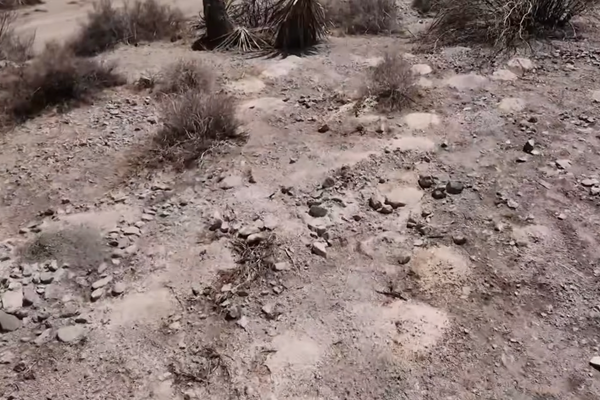
The disaster started early in the morning of 26 April, 1986 with the explosion of reactor 4 at the Chornobyl Nuclear Power Plant, just four kilometres from Pripyat in the Ukrainian region of what was then the Soviet Union. Tons of radioactive dust were released into the air, spreading across both hemispheres of the planet. It is estimated that the worst-hit region, which spans 260,000 square kilometres of Belarus, Ukraine and western Russia, will not return to normal levels of radioactivity for roughly 20,000 years.
Since he first visited Chornobyl in 2002, the photographer Pierpaolo Mittica has been back to the site about 25 times. Years before the plant’s Control Room No 4 – “The room that exploded” – was cleaned up for tourists, he obtained special permission to go inside, wearing a protective suit. “You are inside history,” he says. “In that place, the disaster started. The feeling was powerful.”
After the accident, thousands of people were evacuated, leaving behind homes, jobs and communities. A 30-kilometre exclusion zone was set up around the site of the nuclear plant. The nearby city of Pripyat, previously home to 50,000 inhabitants, was abandoned. Despite this, today an estimated 4,000 workers make up the exclusion zone community. “The zone must be protected and the plant has to be kept in a safe condition,” Mittica says. “There are army personnel, police, firefighters and operators of the power plant.”
Mittica’s images in his new book, Chernobyl (he employs the Soviet-era spelling throughout), focus on human stories inside the zone, including those of official workers, resettlers (known as the “samosely”) who preferred to return home rather than remaining in Kyiv, “stalkers” (young adventurers who illegally explore the zone) and international tourists. Chornobyl is also a significant location for the Hassidic Jewish movement, with Hassidic Jews making pilgrimage to the area.
Since Russia’s invasion of Ukraine on 24 February, 2022, the exclusion zone has been tightly controlled by Ukraine’s Ministry of Defence. “It’s a border area with Belarus, so all access is forbidden,” Mittica says. The stalkers, Jewish pilgrims, tourists and almost all the resettlers have gone. “With the war in Ukraine, all these stories have changed or no longer exist. My book’s the last record of what the exclusion zone was like before the war.”
Meanwhile, the 9 million people living in contaminated areas of Belarus, Ukraine and western Russia, Mittica says, have been “totally forgotten”. Children he has photographed have since died from cancers and other effects of radiation. “It’s really sad to see a child who has lost hope of living a life that has just begun.” People are also giving birth to children with “malformations”, which Mittica understands are likely to get worse with each generation.
The message from the book is that “humans cannot control everything absolutely”, says Mittica, who also argues the disaster “demonstrated to the world that nuclear energy is too dangerous for humanity”. The project provided another lesson for the photographer, too: that nature is resilient. “The zone’s now like a natural reserve. Animals – foxes, wolves, bears, boars – are going back. Streets and squares in Pripyat have dense forests. I realised we’re not destroying nature – we’re destroying ourselves. There are millions of years after for nature to recover.”
Chernobyl by Pierpaolo Mittica is published by GOST.
Six images from ground zero
Souvenir shop, 2019
“When tourists arrive at Chornobyl, there’s a checkpoint before they can go in the exclusion zone,” says Mittica. “There’s a shop there selling things for tourists: T-shirts, flags, mugs, badges. Before Covid, there were about 60,000 to 70,000 tourists a year. For an area that’s economically depressed, it’s really important. But I’ve found that most tourists were just interested in taking selfies in ‘dangerous’ places.”
***
‘Stalker’ dancing at sunset, Pripyat, 2017

“Stalkers are young Ukrainians who go inside the exclusion zone illegally. We slept for two nights in the city with the stalkers in Pripyat. In the evenings, they all went up to the rooftops and started drinking and dancing. You feel complete freedom. You’re in a town that’s empty. You feel like the last people in the world, free from all the routines of life. This picture shows that freedom.”
***
Ania, National Cancer Institute, Kyiv, 2015
“Ania is a six-year-old girl who grew up in a small town outside the exclusion zone. People who grew up in the contaminated areas are having children, and there’s a lot of genetic mutation and illness related to radiation. Ania was suffering from a malignant bone tumour. She was a strong, positive child, passionate about art and drawing. The doctors told me she had little hope of survival. I don’t know if she is still alive or not.”
***
Hassidic Jew inside Chornobyl city synagogue, 2016
“Chornobyl city [located 15 kilometres from the power plant] is home to the grave of one of the founders of Hassidism, Rabbi Menachem Nochum Twersky. Hassidic Jews make a pilgrimage every year to visit the tombs of the founders of the town and this former synagogue. It is the oldest synagogue that survived – the Soviet government tried to erase all religions. It was a military recruitment centre in the Soviet period and now it’s an abandoned place.”
***
Inside the control room of reactor No 2, 2016
“This is a worker inside Control Room No 2. There were four reactors, including the one that exploded. [The other three reactors were relaunched and gradually decommissioned – the last one was stopped in 2000.] But with a nuclear power plant, you can’t shut it down and then go away. You need security for many decades before dismantling everything. There are now about 2,000 people who work inside. Constant maintenance is needed to keep the power plant safe until 2065, when it can be decommissioned.
***
Pasha repairing an engine, Chornobyl exclusion zone, 2015
“A man called Pasha is repairing an engine, which is used to provide ventilation in the radioactive scrap metal recycling facilities. This work to recycle contaminated metals makes a lot of money for people in and around the zone. A powerful sandblasting process takes the radiation away, because the contamination is at the surface, not inside the metals. The problem is for the workers because they’re breathing radioactive particles every day, which could lead to illness.”







